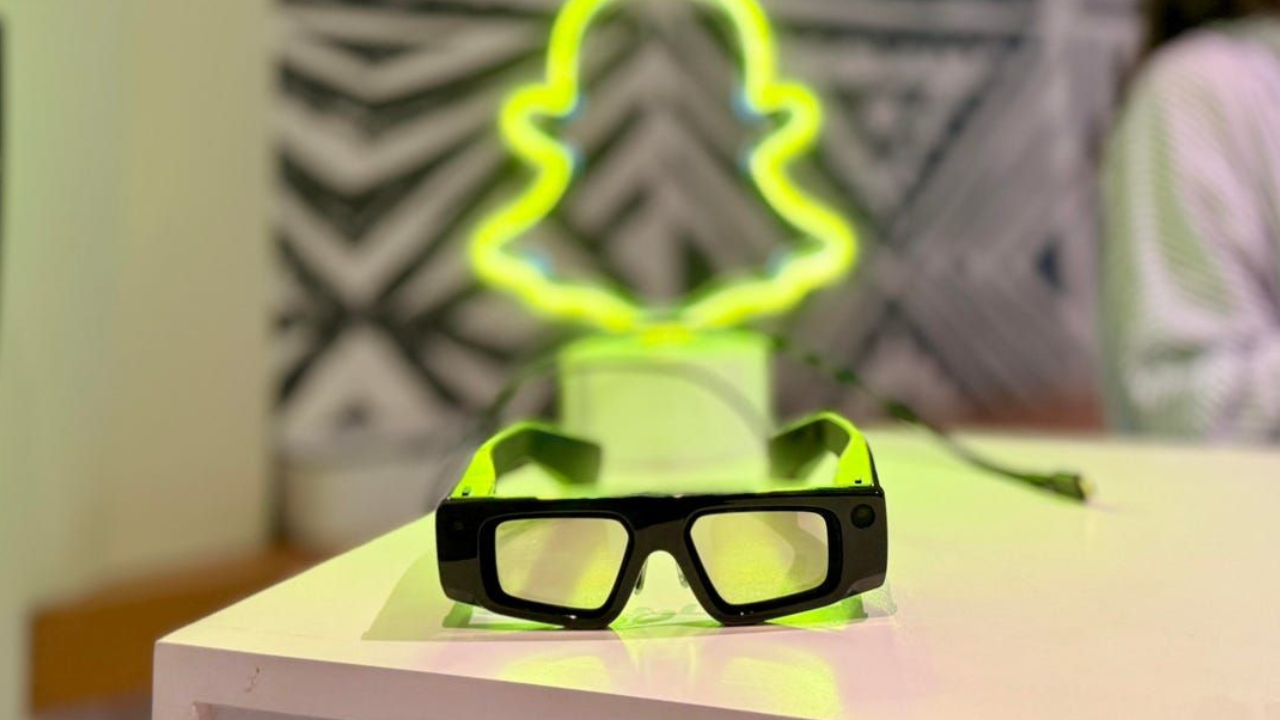Snap Inc., the company behind Snapchat, has officially confirmed plans to release its first consumer-ready AR glasses—called Specs—in 2026, marking a major leap forward from its developer-focused Spectacles line. Here’s everything you need to know about what’s coming and why it matters.
Snap has been quietly building up to this moment. Since launching the first version of Spectacles back in 2016, the company has poured over $3 billion into augmented reality efforts parametric-architecture.com+12ft.com+12lowpass.cc+12nbcsandiego.com+15reuters.com+15macdailynews.com+15. That commitment shows a long-term vision: Snap is aiming not just for novelty, but for widespread adoption of a wearable computing future.
Previous Spectacles models were strictly for developers, often bulky and expensive. Specs, however, are designed for everyday users. Snap CEO Evan Spiegel describes them as “an ultra‑powerful wearable computer integrated into a lightweight pair of glasses” and confirms they will be smaller and lighter than developer versions business-standard.com+5ft.com+5androidauthority.com+5androidauthority.com+39to5mac.com+3bgr.com+3.
Unlike earlier models, the consumer Specs won’t require any external battery packs. They’ll run on Snap OS, an operating system built specifically for AR glasses, featuring gesture control, voice input, and seamless integration with Snapchat gadgets360.com+5macdailynews.com+5techradar.com+5.
What truly sets Specs apart is the integration of AI-driven features and real-time spatial computing. Thanks to collaborations with OpenAI, Google’s Gemini, and Niantic Spatial, Specs are expected to deliver next-level functionality on live video overlays en.wikipedia.org+10theverge.com+10bgr.com+10.
Some of the highlighted features include:
- Hands‑free AI assistant: Imagine changing a tire or learning a pool trick while seeing step-by-step instructions right in your field of vision macdailynews.com.
- Live translation: Real-time translation of spoken language within 40+ languages, thanks to SnapOS transcription integration trustedreviews.com+12gadgets360.com+12bgr.com+12.
- Spatial games and shared experiences: Users can play AR games, explore shared media, or browse virtual content together—all in real time with friends wearing Specs axios.com+15axios.com+15spectacles.com+15.
- AI-generated 3D visuals: Snap3D API enables dynamic creation and placement of virtual objects in the real world gadgets360.com+19to5mac.com+1.
Specs will boast lightweight construction and ergonomic design, more like normal eyewear than previous prototypes business-standard.com+15theverge.com+15economictimes.indiatimes.com+15. They will use see-through waveguide displays, likely powered by Qualcomm Snapdragon processors, and include multiple cameras and sensors for spatial awareness techradar.com+5ft.com+5en.wikipedia.org+5.
The glasses will support adaptive electrochromic tinting, improving visibility in sunlight, and a display field of view around 46 degrees, giving a projection akin to a large screen a few feet in front of you parametric-architecture.com. Audio will be delivered through built-in stereo speakers with spatial sound.
Battery life is expected to offer around 45 minutes of continuous AR use—adequate for brief sessions, though longer-term usage is likely to require recharging parametric-architecture.comandroidauthority.com+3techradar.com+3parametric-architecture.com+3.
Snap has always relied on a vibrant developer community and with Specs, this approach deepens. Over 400,000 developers have already created more than 4 million Snapchat Lenses, used 8 billion times daily gadgets360.com+6axios.com+6lowpass.cc+6.
New tools in Snap OS—like Depth Module API, Snap3D, real-time transcription, and location-based experiences—will empower even deeper innovation techradar.com+10bgr.com+109to5mac.com+10. Integration with Niantic Spatial will support shared AR experiences layered onto real-world maps techradar.com+5reuters.com+5bgr.com+5.
Snap has also emphasized that the developer platform will remain commission‑free, encouraging experimentation and community growth lowpass.cc.
Snap is entering a heated field. Meta’s Ray-Ban Meta and upcoming Orion glasses, Apple’s Vision Pro, and Google’s Android XR hardware are all vying for space en.wikipedia.org+6reuters.com+6techradar.com+6.
However, Specs will likely be priced well below Apple’s Vision Pro, which costs $3,499 androidauthority.com+5theverge.com+5macdailynews.com+5. With its Snap OS ecosystem, existing user base, and optimized hardware, Snap aims to make AR glasses a mainstream device, not just a luxury product.
For consumers, Specs promise a blend of practical utility and social fun. Imagine navigational overlays during travel, live translation during conversations, in-field tutorials, or shared AR gaming experiences—without needing to pull out a smartphone.
On social grounds, Specs extend Snapchat’s core appeal: immersive storytelling and visual communication. Users and creators alike will be able to build, share, and enjoy AR content in a way that blurs the line between the physical and digital.
Some details remain unclear:
- Price point: Snap says it will be significantly cheaper than Apple Vision Pro, but an exact figure isn’t available androidauthority.com+6theverge.com+6axios.com+6.
- Battery longevity: While short-term use is promising, long-term usability and battery optimization are still to be confirmed.
- Privacy and data handling: With onboard cameras and microphones, issues around recording and data storage will need clear policies—especially as competitors face surveillance concerns en.wikipedia.org.
Snap’s Specs are shaping up to be a noteworthy milestone. Releasing in 2026, they represent Snap’s ambition to shift computing from screens in our hands to enhanced experiences in our real world.
If the company nails design, pricing, developer support, and AI integration, Specs could accelerate the move toward wearable AR, join mainstream tech, and inspire new forms of communication and creativity.
Snap’s upcoming AR glasses, Specs, are the result of over a decade of development and billions invested. Scheduled for a 2026 launch, they’re set to balance sleeker design, AI-powered functionality, and a robust developer ecosystem at a competitive price. As Snap competes with Meta, Apple, and Google in the evolving wearable space, Specs could be the tipping point for AR’s mainstream adoption—ushering in an era where our digital lives overlay our daily routines in seamless, human-centered ways.
Stay tuned—Specs could very well be the device that shifts computing forever.
Stay in touch to get more news & updates on Moon Valley News!
